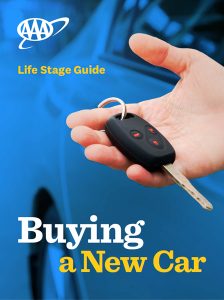Boxer Mike Tyson famously said, “Everybody has a plan until they get punched in the mouth.”
I’ve never been punched in the mouth, but I would have taken it over the $700 repair bill for a broken axle on a Toyota Corolla I had owned for less than a year.
One of the reasons I bought a Toyota was that it was a no-frills, reliable car. I guess I got one of the bad ones. I certainly didn’t plan for a fix that expensive.
Fortunately, the extended warranty I almost didn’t buy kicked in and I walked out of the shop with a working axle plus an overwhelming feeling of relief. My face might even have been glowing.
Sure, I paid for the extended warranty, but in the end it was essentially a payment plan for a repair bill that would have otherwise thrown a monkey wrench in my monthly budget.
The best part was I had the warranty for another two years, and I knew if something else went wrong, I could have it fixed without brouhaha at the shop or a wrecked savings account.
What is an extended warranty?
Nobody wants an unexpected car repair bill dropped in his or her lap. An extended warranty is a safeguard against that headache.
Like insurance for car parts, an extended warranty is a contract that says the warranty provider will pay for repairs to important vehicle components if they fail. It can be purchased for a new or pre-owned vehicle.
Most new cars roll out of the factory with some sort of manufacturer warranty. This will often include something like a three-year, 36,000-mile comprehensive warranty that covers nearly every part between the front and rear bumpers. Another warranty frequently advertised in car commercials is a five- or seven-year powertrain warranty, which covers the engine, drive axles, transmission and other parts that make the car go.
Extended warranties pick up where warranties leave off. In addition to the powertrain, an extended warranty will typically cover faulty suspension parts, cooling systems, brakes and electronics. There are “stated” plans, which state exactly what is covered, and “exclusionary” plans, which covers anything that is not specifically excluded.
What these warranties do not cover are routine car care services such as oil changes, brake pad replacements and tire rotations. They usually do not cover body panel damage or theft, either.
How do I get one?
Extended warranties can be purchased when you buy a vehicle at the dealership, or you can buy it later on from what’s called an independent warranty provider.
If you buy it when you finance the car, you can roll it into your monthly car payment instead of paying a lump sum down the line.
The price you pay for the warranty depends on factors such as the type of vehicle, its age and its mileage, said Ted Lyons, who administers the AAA Vehicle Protection Program. It also depends how long you would like the coverage. Some providers offer a variety of options, including plans as low as one year, 12,000 miles up to something as comprehensive as seven years, 100,000 miles.
Are there deductibles?
Some plans charge between $50-$100 for deductibles. Zero-deductible plans are also available. Some – but not all – warranty providers will ask you to pay for the repair and be reimbursed. You can shop around to find a plan that will not require you to do this.
Where do I get my repairs?
Drivers who buy a warranty from a manufacturer can have the vehicle serviced at any licensed dealership.
Those who buy from an independent provider can either choose from any licensed facility or select from a specific network of facilities chosen by the provider. Again, you can shop around to find a provider who lets you choose the facility you want.
When does it make sense?
Every situation is different. Drivers who bought a new car should examine the manufacturer warranty that comes with the vehicle and learn what is covered and what exclusions apply. Find out if an extended warranty would kick in after the factory warranty expires or when the powertrain warranty expires.
Drivers who plan to trade in their vehicle before the manufacturer warranty expires may not benefit from an extended warranty.
However, some extended warranties are transferable, meaning they can be sold along with the car to a new owner in a private sale. The car would continue to be covered by the warranty and could add value to car for the seller.
Extended warranties cannot be purchased to cover a current problem with a car.
What it can do is provide peace of mind, said Shaun McGee, vice president of financial services for AAA Northeast Bank.
“You never know when you might experience car troubles, but with an extended warranty, you will know that you won’t walk out of the repair shop with a huge bill for a major repair,” McGee said.
Savings generation
AAA saves you time, money and worry: AAA members can get a great price on extended warranties through the AAA Vehicle Protection Program. Plans are competitively priced and repairs can be made at any licensed repair facility in the nation.
Get a free quote at AAA.com/Warranty.

















